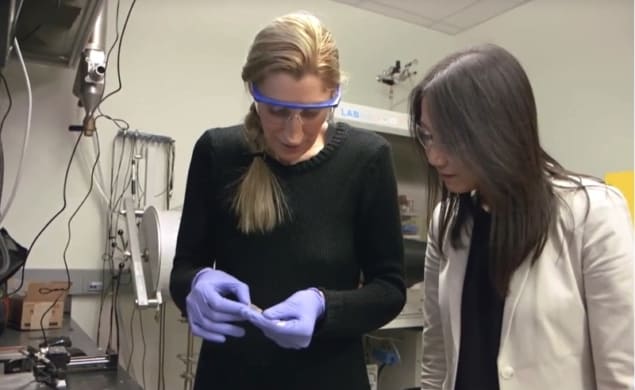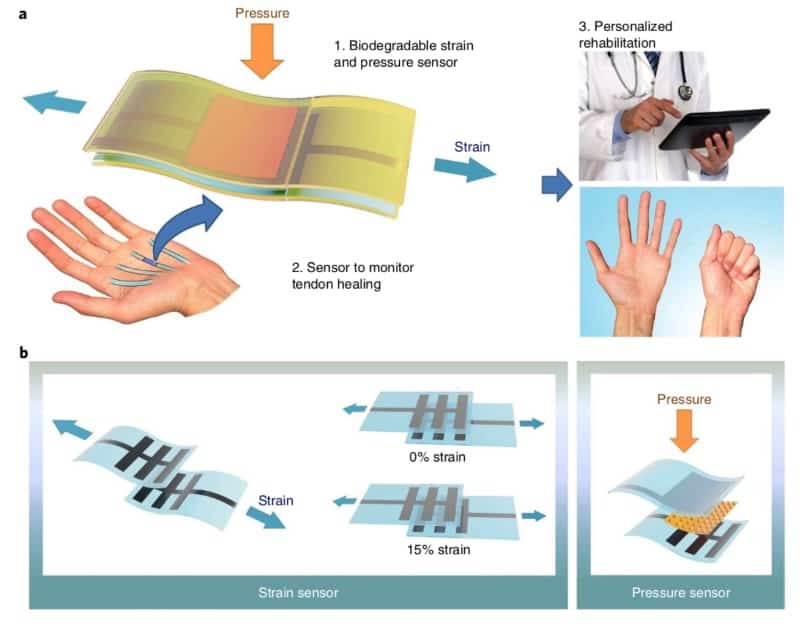
Every year in the USA alone, around 14 million people suffer from tendon, ligament and joint injuries. Many of these injuries require surgery, followed by a rehabilitation period to restore the repair site to its pre-injury function. A diagnostic sensor capable of measuring biomechanical characteristics of the affected tissue in real time would represent a significant step towards improved assessment of a patient’s recovery.
The sensor should, for example, be able to measure typical tendon strains (of less than 10%) after the surgery. However, existing implantable sensors either suffer from inadequate sensing capability or use materials with unreliable biocompatibility. Use of biodegradable materials would avoid the need for second surgery to remove the sensor. With that in mind, researchers from Stanford University devised a biodegradable sensor compatible with living organisms that can satisfy tissue recovery requirements by discriminating strain and pressure stimuli (Nature Electronics 1 314).
The sensor
The device consists of two stacked sensors that can accurately measure strain and pressure independently. For material design, the researchers used two biodegradable elastomers: poly-glycerol sebacate (PGS) and poly-octamethylene maleate citrate (POMaC). Two thin-film comb electrodes are sandwiched between two stretchable elastomer layers and when strain is applied, a change in capacitance is observed as the two electrodes slide relative to each other.

The pressure signal is monitored with a flexible and highly sensitivity capacitor supported by a thin elastic dielectric layer on both sides. This design allows the pressure sensor to work independently, without inducing any strain signal. The sensor responds in the millisecond range and can discriminate strains as small as 0.4% and pressures as small as 12 Pa (the amount of pressure exerted by a grain of salt).
Biocompatibility study
The team performed an in vivo study, which suggested that the device is compatible with a rat’s body. They tested the sensors by subcutaneously implanting them on the backs of rats. The rats were subjected to strain and pressure stimuli, and afterwards strain signal on tendon was measured. The sensor was observed to be stable for two to three weeks, when compared with a reference non-biodegradable sensor. Testing the sensor in vivo revealed that it was operational inside the body without any side effects and was functional for more than two weeks.
The researchers believe that this sensor – with high-sensitivity, faster response time and biodegradability – can play a valuable role in biomedical applications such as monitoring cardiovascular patches and reconstructive surgery. Sensors transmitting real-time information in vivo will open avenues for refined and personalized medicine where mechanical deformations and pressures can be easily monitored. The research team now plans to develop a biodegradable circuit capable of wirelessly transmitting measured signals through the skin.



